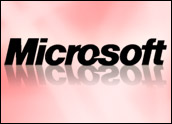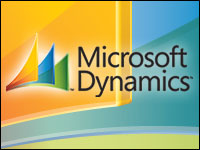
Note to self: Write something nice about Microsoft Convergence 2012. They did a great job in Houston, and most importantly you can really see the CRM focus coming together with social, mobile, analytics, back office and a lot more. It’s taken a long time because there are a lot of moving parts for Microsoft, but Convergence was impressive.
To get a sense of all the wonderfulness surrounding Convergence, you need only glance at some of the many observations made by the likes of Paul Greenberg, Brent Leary, Dennis Howlett, Josh Greenbaum and many others. So kudos to Microsoft.
My observations will be somewhat different. While I also think Microsoft has made important strides and I applaud its CRM team, I want to focus on what’s around the bend. First, there’s the new CRM GM, Dennis Michalis, who took over from Brad Wilson after Wilson turned Microsoft into a CRM power almost by sheer force of will.
Michalis is a find, the kind of acquisition that, if he was a stock, would have been overlooked by everyone but Warren Buffet. From what I can tell, Michalis has spent most of his career in Europe or the Far East and did well in those markets; however, he was somewhat off the radar when Microsoft saw his talent and scooped him up. Michalis has been with the company only a few months, so this year’s Convergence was still mostly the result of Wilson’s efforts. Michalis will have to stand on some big shoulders to do better, and I think he can.
From ERP to CRM
For starters, he will need to flesh out the social, and to a lesser degree, mobile strategies and product lines to be truly competitive. Microsoft is not a social powerhouse and trails in the mobility wars, at least on the mobile operating system side (and that’s a lot). But they have a strategy to offer their CRM on multiple browsers, and in fact demoed a mobile application for the iPad, which was impressive. Their analytics package for sales, from what I saw, is powerful and sports a nice and intuitive interface, though overall the product still has a straight-from-the-software-lab look to it.
The company’s biggest advances were, in my opinion, not software-related though — they more clearly relate to the company evolving from an ERP company to more of a CRM company. This needs some explaining.
First, it was nice to see Kirill Tatarinov speak about the drivers that his organization takes into account when trying to figure out product direction. He said they include economics, geopolitics, people and technology, and I think that’s hugely important, though I don’t think it has been the case in the past. The business climate, the cost of fuel and raw materials, the stability of the local political regime including personal freedom and free markets, all go into what will drive demand as well as the nature and character of demand. They drive what people will buy and the style of the technologies they will use in their personal and professional lives. All this might seem to affect ERP more than CRM, but I think the distribution of influence is roughly equal.
What Needs Work
But those are high-level ideas, and truth be told, it’s an ongoing effort to get them down to street level, and there are some key things that I think Microsoft can do better in that regard. For starters, the company culture is one of a vendor selling through distribution to others who will produce a final full product. In ERP, they’ve been successful at imagining customer business practices and driving solutions to market in some key areas, especially manufacturing. This hasn’t been the case to the same degree in CRM, and it needs to be.
Microsoft needs to do a better job now of connecting its many dots. For example, it is still at the point where it is hitting checklist items like social — so that it can compete with the likes of Salesforce — but without offering a compelling story of how a business progresses because it adopts new technology. Salesforce calls it “the social enterprise,” and Microsoft has no counter. It is still selling components, modules, and it needs to elevate its game.
Also, too frequently for my taste, Microsoft likes to show off customers who have heavily customized their CRM instance, especially non-profits. It’s nice to see non-profits in the mix, but the focus needs to be on for-profit business. Also, this makes points for their XRM strategy, which goes against Salesforce’s Force.com platform, but it is wide of the mark for a customer that wants out-of-the-box functionality that works the way its business works and drives improvement.
Cloud computing is another area for tightening up. Here Microsoft joins the rest of the market, excepting Salesforce, in highlighting the benefits of a go-it-yourself, roll-your-own strategy of hybrid clouds in which customers get to decide where their data resides. I don’t think this is the right strategy for any vendor, and here’s why: We see too many examples of companies who manage their own data being hacked, and increasingly the hackers are not individuals with an ax to grind but nations like China stealing IP or radicals like Anonymous aiming for industrial-scale mayhem.
In this world, the strategy shouldn’t be building your own bomb shelter. Microsoft and the other vendors have a credible case to make that they can and do perform a superior job of keeping data safe, and that the time for going it alone is rapidly ending. A more credible and strategic program might be for all vendors to say, “Hey, we’re the pros at this, let us handle it.” If I ruled the world (hahaha!) that’s the tactic I would take. It will take some years to accomplish this education, but we need to start now. And we need to quit deluding ourselves with a cowboy ethos that individuals can do a better job of data security than an organization dedicated to the task, because the evidence shows this is just paranoia.
Sweet Charity
OK, back to Convergence. My last point — that Microsoft needs to do a better job connecting the dots — has another element. I am sorry to keep comparing Microsoft to Salesforce, because I think the two are more different than similar, but in the area of philanthropy I think Microsoft is trailing Salesforce when it could be leading.
You know that Salesforce has this 1:1:1 model in which it donates 1 percent of its equity, time and product to a 501 (3) (c) charity, the Salesforce Foundation. At major events like Dreamforce, they have charitable activities in which customers can easily donate an hour of their time to do some public good. All this activity is always tied back to the charity.
At Convergence, Microsoft tried to do the same thing, and the effort was inspiring, but it wasn’t tied back to anything in particular. Volunteers worked with Habitat for Humanity to renovate a house, and when attendees filled out evaluation forms, Microsoft donated a dollar to a Houston charity, which was great. But without some over-arching program, I think Microsoft misses getting credit for its largess and also for its community outreach, which is important.
Last point: Microsoft has not been a leader in any aspect of CRM. It has taken a less risky, fast-follower approach, and it has breathed in other peoples’ exhaust as a result. It’s time for the company to take a leadership position in something if it expects to reach the highest plateau in the business. That plateau is unified communications (UCS).
Microsoft has Lync, a UCS that it offers and also uses in-house; Microsoft people tell me it works well. UCS is, I think, potentially the next iteration of social networking. It has enormous potential to save companies money and improve the links with customers. To say the least, it would be smart of the company to step up its emphasis on UCS. The window of opportunity is closing, and I hope the company takes advantage of it.
If this sounds too critical, let me end on a more positive note. Microsoft is a rising star in CRM, and Convergence polished its reputation. It has end-to-end technology from the back office to the front and from landlines to airwaves. It is making headway in social, mobile and analytics — the next wave. It has a good handle on at least some of the critical business processes that its customers depend on. Like any software company, it will always be building out functionality, but its focus now must include, to a greater degree, all the many things that go into making a whole product in the social age.























































